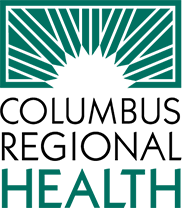VIDEO: CRH COVID-19 Update From Dr. Sharma

In this video, Dr. Deep Sharma of the Lung Institute answers common COVID-19 questions and discusses Columbus Regional Health's coronavirus response.
Transcript
Hello everyone, this is Deep Sharma. I'm one of the intensivists and interventional pulmonologists. I'm also the director of the Lung Institute and the intensive care unit at Columbus Regional Health. As far as from the COVID-19 response, we are definitely seeing more patients. A majority of them are mild to moderate cases that are staying out in the community and are being managed by a self quarantine or on outpatient basis. A few of the patients definitely require hospitalization and also ICU level of care. And to be able to take care of a number of patients that we anticipated, we did a lot of preparations from our ICU and CRH standpoint. We were able to set up and multiply our intensive care units in the hospital and identified areas and converted them into ICU so that ICU level of care can be provided to our patients. From our regular 16 bedded ICU, we have the capacity to take about 60 ICU patients at that time.
So as a pulmonologist I see a lot of respiratory infections including viral infections. Seasonal flu is one of those that we see every year, especially during the winters. COIVID-19 is slightly different from the flu that we see every year. The biggest difference between COVID-19 and flu is the level of transmission that happens from person to person. This is definitely much more contagious and can also stay in your body while you're symptom free. So with COVID-19, there are a huge proportion of asymptomatic carriers, which actually makes it tougher to control and it becomes hard to control the transmission from person to person. But one thing we know for sure is prevention is the best cure when it comes to the COVID-19.
So the primary goal is to control the spread of the virus. And that has to be our top priority and a lot of emphasis was made and put on that as a health system standpoint. All of the healthcare workers and staff dedicated a lot of time and effort to make sure that we are able to control the spread of infection to our existing patients and also keep providing effective and safe healthcare to other patients as well. So as you know we are screening everyone who comes to our facility. This includes our main hospital and also our satellite clinic and other facilities. We make sure that every patient has a mask and everyone accompanying the patients have a mask. And then we follow our social distancing, maintain distance between the staff and the patients, and with appropriate hand washing. We have more than the recommended amount of PPE that our staff uses in forms of masks, face shields, gowns, gloves, and everything that CDC recommends.
And we have been prepared for the worst case scenario and have been hoping for the best. And so far I would say we have been very pleased with how our patients have done and have been able to provide all the evidence-based recommended treatment that has been recommended by the fellow colleagues in my speciality and everything that we know what possibly help our patients.
So the treatment options can be divided into two broad categories. The one is the supportive management which we provide to the patient to maintain their vitals, their breathing, their blood pressure, and give their body as much support it needs to recover from this. Other categories of treatment are focused on suppressing the viral load and also reducing the amount of virus in the system. So since we had our first patient more than four weeks ago, all our patients have been on those drugs. And also we have participated in a various trials for other drugs that we hear about that could be beneficial. But everything that is in favor of our patients is being done from the ICU standpoint.
For our severely ill patients in the ICU, FDA has approved use of convalescent plasma, which is the plasma extract from a patient that has recovered from COVID-19. This is again being offered at a very few centers under a research trial. CRH has collaborated with Mayo Clinic Rochester, and under their IRB, we will be offering that treatment to our patients who meet the criteria and may benefit from that.
So I would like to use this platform to thank all of my colleagues that I work with in my speciality and also in other specialties, also our CRS leadership, our nurses, respiratory therapists, staff, food services, and everyone else in the hospital who made it possible for us as a pulmonary critical care team to be able to provide and prepare that we thought we possibly may have to. We are no where out of the woods yet, but going from a 16 bedded ICU to a 60 bedded ICU in matter of a few weeks is definitely commendable. And I think it just points towards the collective effort that was taken and the cooperation between various teams and the vision from the leadership and various departments. So I just, as a physician, wanted to express my huge appreciation.

